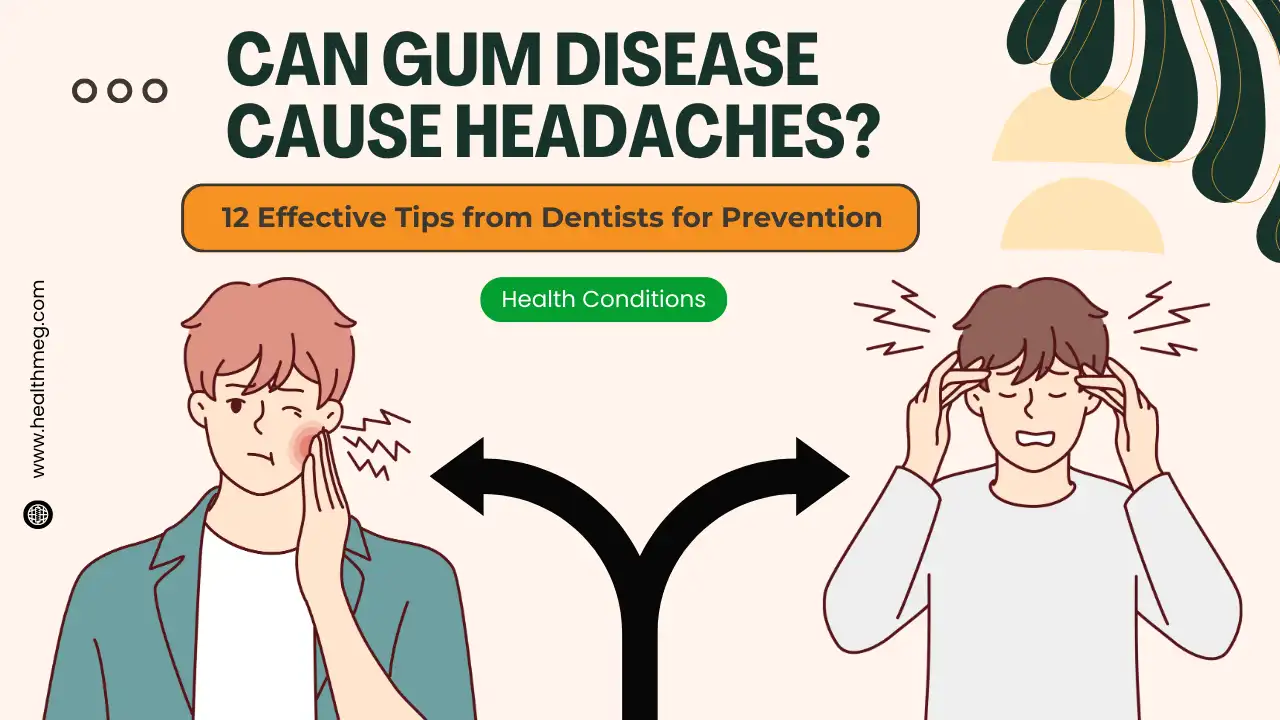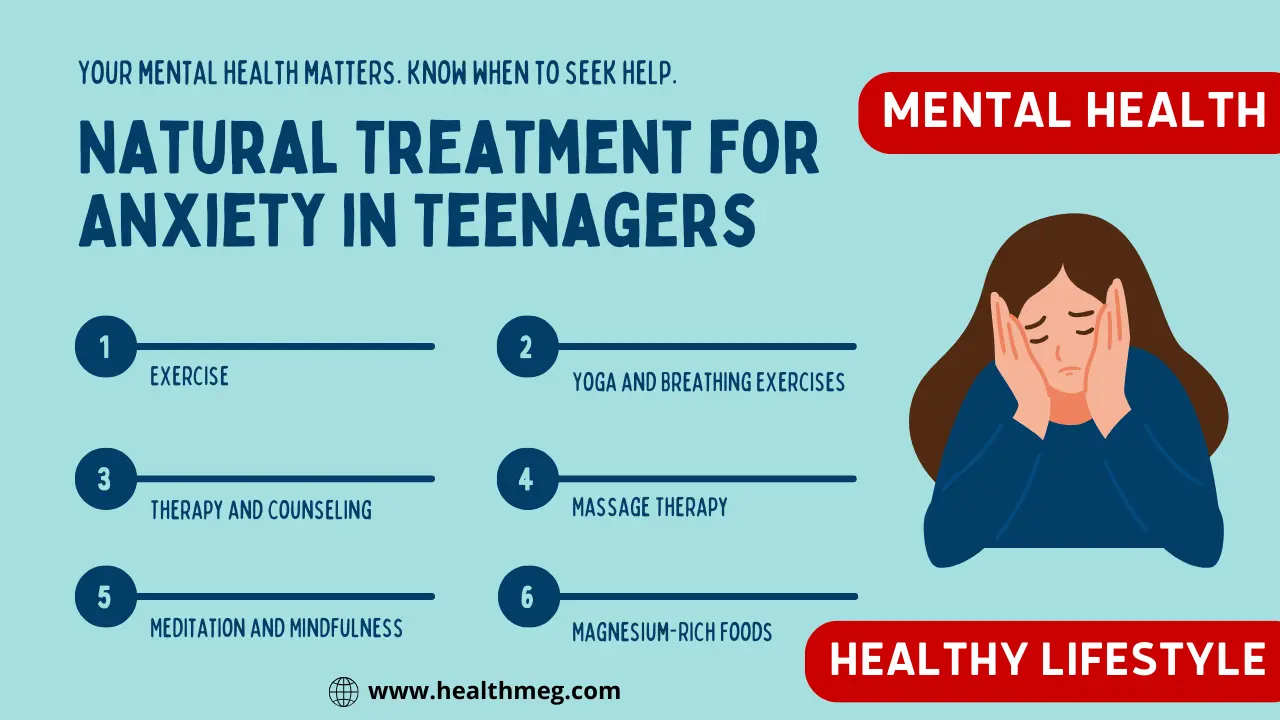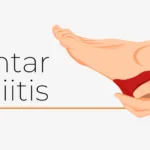Introduction
Headaches and gum disease—are two uncomfortable health issues that may seem completely unrelated. However, research shows that for some people, they can often go hand-in-hand. The inflammation caused by gum disease can trigger headaches in those predisposed to them.
That’s why maintaining good oral hygiene is about more than just a bright smile. It’s also essential for overall health and preventing problems like headaches. Follow these 12 tips from dentists to stop gum disease and the headaches it can spur.
Let’s find out “Can Gum Disease Cause Headaches?” in this comprehensive guide.
Do Read the People Also Ask (FAQs) about this topic.
Key Takeaways
| Topic | Summary |
|---|---|
| The link | Research shows gum disease and headaches are connected through inflammation. Gum bacteria trigger the same inflammatory response involved in headaches. |
| Prevention | Daily oral hygiene like brushing, flossing, and mouthwash prevents gum disease and subsequent inflammation triggering headaches. |
| Dental visits | Seeing the dentist regularly for cleanings and checkups catches gum disease early before inflammation and headaches start. |
| Lifestyle habits | Diet, exercise, stress management, and avoiding smoking bolster the body against oral bacteria and inflammation. Key supplements support gum health. |
| Oral-systemic health | Gum disease doesn’t just impact oral health, but total body health and conditions like heart disease, diabetes, and dementia. Overall wellness starts with oral wellness. |
Can Gum Disease Cause Headaches?
Yes, gum disease can potentially cause headaches. This is because the inflammation and infection associated with gum disease can lead to pain that radiates to other areas of the head.
A study conducted in India in 2011 found that people with gum disease were more likely to suffer from migraines. Another research conducted in 2014 in Saudi Arabia indicated a potential association between periodontitis (a severe form of gum disease) and tension headaches, especially when pain is experienced around the temples.
Moreover, tooth decay or advanced periodontitis can also cause headaches, similar to migraines. This is referred to as referred pain, which means that you start feeling pain in a different part of your body other than the painful part. This is due to the numerous nerve connections that connect the teeth and other facial structures to the brain.
However, it’s important to note that while there is a potential link, not everyone with gum disease will experience headaches. If you’re experiencing both gum disease and headaches, it’s important to see a healthcare provider for a proper diagnosis and treatment.
How Gum Inflammation Triggers Headaches
While oral bacteria normally stay contained in the mouth, gum infections allow them to enter the bloodstream and travel to other areas of the body. Studies show that this bacterial inflammation can exacerbate headache disorders like migraines and tension headaches.
Research has found that people prone to chronic headaches are twice as likely to also have gum disease. The Journal of Oral Science shared a study where treating gum disease resulted in dramatic headache relief for participants. Over 90% saw their headache frequency and severity decrease.
The connection is the body’s inflammatory response. Gum disease causes chronic inflammation, and headaches are inflammation-based as well. For those predisposed to headaches, the added inflammation can push them over the threshold into a headache attack.
Oral bacteria impacts nitric oxide levels, which dilate blood vessels. This affects blood flow, which is already a headache trigger. The bacteria also causes the liver to release C-reactive proteins, another inflammatory marker implicated in migraines.
12 Tips from Dentists for Prevention
With this close inflammatory connection, dentists recommend meticulous oral hygiene for headache prevention. Stopping gum disease reduces overall inflammation, stopping it from inflaming nerves and blood vessels involved in headaches.
Follow these tips from dentists to nip gum disease in the bud, lowering your headache risk:
- Brush thoroughly twice a day: Brush for 2 minutes each time, angling the bristles under the gumline to dislodge bacteria. Use a soft-bristled toothbrush and fluoride toothpaste. Take care to reach all areas, including behind the molars.
- Floss once daily: Flossing removes plaque and food particles brushing missed. Doing it once a day clears bacteria right from the gum line and pockets before it can multiply.
- Use antimicrobial mouthwash: Look for a mouthwash with cetylpyridinium chloride to kill germs missed by brushing and flossing. Use as directed after brushing and flossing.
- Don’t smoke: Smoking increases gum disease risk substantially, as the chemicals impact tissue health. Kicking the habit supports gum health.
- Manage stress: Chronic stress hurts immune health, increasing susceptibility to gum disease. Managing stress through exercise, meditation, socializing, and other relaxation techniques bolsters the body against oral bacteria.
- Eat less refined carbs: Excess refined carbs feed the bacteria that cause gum disease. Limit foods like white bread, chips, and sweets to control bacteria.
- Choose gum-friendly foods: Nutrients like vitamin C, calcium, and folic acid keep gums strong and resistant to bacteria. Eat citrus fruits, nuts, seeds, beans, and greens.
- Take key supplements: Vitamin C, vitamin D, CoQ10, and magnesium to aid gum tissue health. A multivitamin provides gum-boosting nutrients in one dose.
- Get routine dental cleanings: Professional cleanings remove hardened plaque and tartar brushing and flossing misses. Get cleanings every six months.
- Treat tooth grinding: Grinding and clenching wear down the enamel, exposing the dentin that’s more cavity-prone. See your dentist for a nightguard.
- Monitor gum health: Watch for symptoms like red, swollen, or bleeding gums indicating gum disease. Get it treated promptly by your dentist.
- See the dentist for headaches: Mention frequent headaches to your dentist, who can evaluate your oral health for inflammation factors that could be playing a role. Treating gum disease could provide headache relief.
When to Seek Emergency Dental Care
Headaches aren’t the only complication gum inflammation can cause. It also allows bacteria into the bloodstream that could lead to infection spreading. Seek emergency dental care for:
- Severe tooth or jaw pain
- Swelling in the gums or face
- Pus around gums or teeth
- Gum sores that won’t heal
- Loose teeth
These require professional cleaning and antibiotics to stop the infection before it spreads or causes tooth loss.
See Your Dentist and Doctor for an Evaluation
Because the relationship between headaches and gum disease is based on inflammation, visiting both your dentist and doctor provides the most complete evaluation.
Your dentist can assess your oral health for signs of gum disease, as well as other problems like TMJ, tooth grinding, or oral infections that could impact headaches. They can provide preventative cleanings and gum disease treatment.
Meanwhile, your doctor can test for other inflammation markers that may be exacerbating headaches. Blood tests check for vitamin and nutrient deficiencies, hormones, blood sugar, and food sensitivities that cause inflammation. For chronic headache sufferers, inflammation management is key.
With coordinated care between medical and dental experts, you get the full picture of factors that may contribute to headaches. Ongoing management of both oral health and inflammation can then prevent headaches.
The Inflammation Connection
Gum disease and headaches may seem completely disconnected. But the link is inflammation—excessive levels rev up headaches in those prone to them. While not everyone with headaches has gum issues, and vice versa, inflammation provides the piece that connects them.
By taking daily preventative oral health steps and getting prompt gum disease treatment, you lower inflammation and enjoy a brighter, healthier smile and freedom from headaches. With care from both your dentist and doctor, you can get to the source of inflammation and gain lasting relief.
Conclusion
Gum disease and headaches may seem unrelated, but they can be closely connected through inflammatory pathways in the body. By taking steps each day to prevent gum disease through oral hygiene and regular dental visits, you can maintain oral health and lower systemic inflammation. This keeps headaches and other health issues at bay, providing whole-body wellness benefits. Don’t underestimate the power of prevention. Your oral health habits impact your overall health in big ways.
Let me know if you would like me to modify or add to this summary table and conclusion in any way to best capture the key points of the article. I’m happy to provide additional suggestions to effectively summarize the content.
People Also Ask (FAQs)
Q) How do you know if your headache is from your teeth?
A) Signs your headache may be related to a dental issue include pain focused around the jaw, teeth, or one side of the head; pain when chewing; pain that starts after meals; and chronic daily headaches. See your dentist for evaluation.
Q) What are the warning signs of gum disease?
A) Red, swollen, tender gums; gums bleeding when brushing or flossing; persistent bad breath; receding gums; loose teeth; and pus around teeth are key symptoms of gum disease to watch for.
Q) How does gum disease affect your brain?
A) Gum disease bacteria enter the bloodstream and cause inflammation throughout the body including in the brain, where it can impact brain tissue and raise dementia risk.
Q) Can tooth decay cause headaches?
A) Yes, tooth decay and dental abscesses can cause severe tooth pain that may radiate to the jaw, temple, or one side of the head causing headaches. Getting cavities filled provides relief.
Q) How do you get rid of a dental headache?
A) See your dentist to pinpoint and treat the underlying dental issue like an abscess, temporomandibular joint disorder, or teeth grinding. This will resolve the resulting headache.
Q) Where is a tooth headache located?
A) Toothache headaches cause pain around the problematic tooth that can radiate to the jaw, ear, temple, forehead, or entire side of the head.
Q) What kind of headache can you feel in your teeth?
A) Dental issues like abscesses, impacted wisdom teeth, TMJ, and tooth grinding cause pain directly in affected teeth that can spread into a headache. Sinus infections also cause tooth and headache pain.
Q) What does a tooth infection headache feel like?
A) An intense, pounding, throbbing headache on the infected tooth’s side along with tooth sensitivity and pain while chewing signals a tooth abscess headache.
Q) What are the symptoms of a tooth infection spreading to the brain?
A) High fever, vision changes, nausea, vomiting, neck stiffness, seizures, confusion, and loss of consciousness indicate a brain abscess requiring emergency medical care.
Q) How do you get rid of a headache from clenching teeth?
A) See your dentist for a nightguard to prevent grinding and take over-the-counter pain medication. Massage, warm compresses, and stress management provide relief too.












Events causing extreme unnoticed stress have caused me to develop what I suspect is lichen planus causing tenderness & pain originating in my inner cheeks that spread to gums. Dental care was very painful. This happened 1 1/2 years ago and after 9 months my mouth improved on its own but now is beginning to worsen. I’ve had dental cleanings 4 times annually for years and practiced good dental hygiene. I think this disease developed because I have other autoimmune disorders so I’m susceptible. Can you address lichen planus and how to treat it? Btw I’m an elderly female.